There are many ways to improve your property, but you shouldn't overlook energy efficiency improvements when it comes to impacting your house in the short and long term.
With so much focus on rising energy bills and the cost of heating your home, taking steps to retain heat inside your home makes sense. However, property insulation isn’t just about retaining heat and lowering energy bills; it helps your home adapt to changing temperatures and impacts the flow of noise inside and outside of your home.
WeDoRender offers an extensive range of insulation services, and we believe external wall insulation is a highly effective option. If you’d like to learn more about the benefits of a cavity wall insulation system, or you’d like to learn more about our process, please get in touch.
For now, read on to learn more about external insulation solutions and why they might be perfect for you, your solid walls and your house.
An external wall insulation system (EWIS) is a system used to insulate the external walls of a building. The system typically consists of an insulation board that is attached to the wall, followed by a render or cladding system. EWIS can be used on both new buildings and existing buildings.
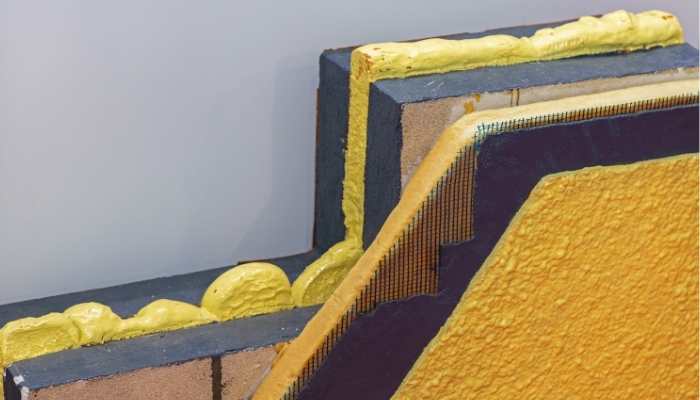
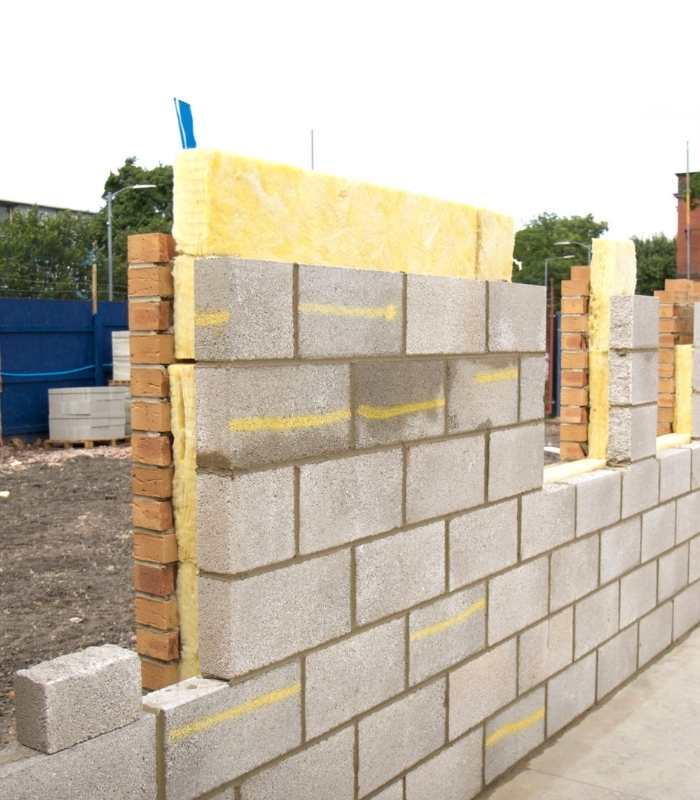
External wall insulation can provide several benefits for your home. It can help keep your home warmer in the winter and cooler in the summer, saving you money on your energy bills. It can also reduce noise from outside and make your home more comfortable to live in.
External insulation can be installed on any building, and there are many benefits to using it:
These are essential benefits, offering short and long-term improvements for property owners. If you are considering adding cavity wall insulation to your home and would like to discuss the matter with an expert, we are happy to advise and guide you.
WeDoRender is active in installing solid wall insulation and advising on external solid wall matters. We are cutting the cost of heating bills without compromising on the structure of people's property or their cavity walls. We can also advise on internal insulation, solid wall insulation and of course, the all-important topic of external wall insulation cost.
While there are many positive reasons to invest in exterior solid wall insulation, there are also some drawbacks to this work.
While adding an external layer of insulation improves the property's energy efficiency, there is a cost involved. With more material and added labour, installing exterior solid wall insulation costs more. Depending on your budget, this might be too high a price or a cost which offers little value for money.
Property owners must review the cost of work and assess it concerning their property value, the expected impact on value, and what they determine to be actual value for money.
At WeDoRender, we can advise on the cost of installing solid wall insulation and the potential value of any project. Of course, with each customer holding their views on value for money, this is a decision you’ll need to come to by yourself. However, we are happy to advise you on installing external wall insulation as best we can.
Any time you work on the structure of a building, there is an increased chance of a problem. We are professionals with considerable experience installing exterior wall insulation, which means you can rely on us to deliver a high standard of service. However, when you carry out work, there is always a chance of something going wrong, even with stone walls, but we will appraise you of the work and its progress.
We are confident of maintaining and improving the solid wall properties of your home, and the benefits of insulating your solid walls are worth pursuing.
There are times when it is helpful for professionals to gain access to wiring and plumbing elements in and around the walls of a property. With exterior wall insulation, there is a barrier to these aspects, creating an issue during repair or maintenance work.
It might be that insulation delays repair work or increases maintenance service costs. Again, the longer-term benefits of insulation are often greater than short-term inconvenience, but it is something to bear when assessing the work's value and merit.
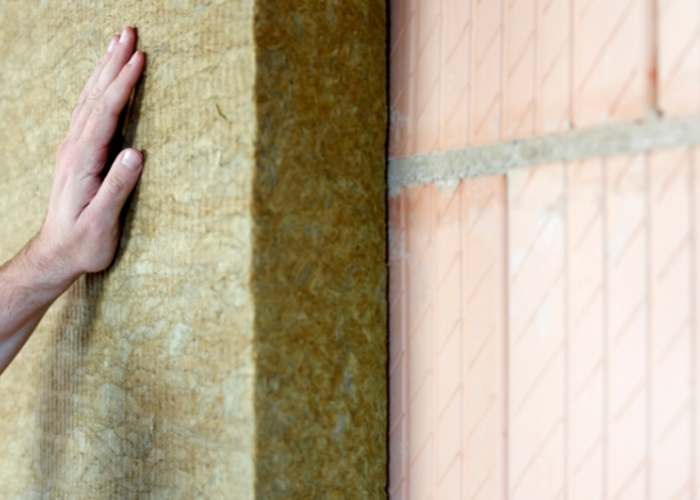
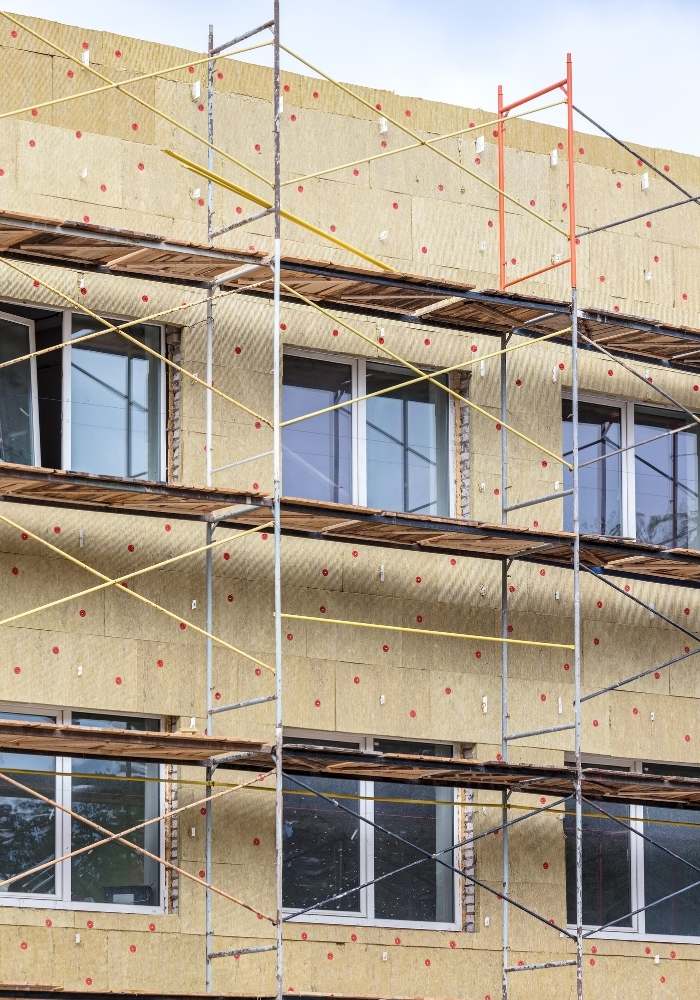
Even though many people talk about cavity wall insulation as a single entity, there are many different ways to insulate an external wall.
The first thing to consider is which option best is for you, as there are two leading types of this insulation solution:
The board is commonly made from mineral wool or polystyrene, and it is joined to the external wall with mechanical fixings or an adhesive. With insulated render, a layer or mortar, which contains insulating material, is applied to the external wall.
When weighing up your options for insulating cavity walls, knowing what material is used in each solution and what might be best for your needs is helpful.
EPS is the market leader for external wall insulation because it is very light to use, easy to work with, and highly affordable. A quick and simple comparison is to consider tiny polystyrene balls compressed together so tightly they merge into a board.
This solution works with trapped air bubbles, preventing heat from moving from one side of the board to the other.
There is a slight drawback with EPS, and it has a low fire rating. When everything else in the property is in good order and there is a viable cladding system on the outside of the property, this isn’t a concern.
When you have a fully integrated and covered system, the barrier associated with the render stops fire in its tracks before it reaches the insulation. With this system, your property can still enjoy a positive fire rating. Without it, though, the limitations of EPS are exposed.
If you are familiar with loft insulation or insulating internally, you have a great starting point for recognising mineral wool, albeit this is more compressed. Basically, if you've seen an insulating layer across a timber frame or an internal floor area, you will recognise this material.
The compressed nature, like the EPS system, creates the board, but it also excels with soundproofing capabilities, and it has an excellent fire-resistance rating.
These are all positive features of this material, but some drawbacks are associated with this material. It is heavier than EPS and more cumbersome to work with. So, labour costs are higher, and it isn’t as great at insulating as other materials. This material won’t let you down, and it is a viable option, but you should consider the full range of insulation materials before committing to one.
There is no denying sustainability is an increasingly important aspect for many people, and there will be people who are interested in using it for their insulating material. A strong feature of this substance is its breathability, making it an ideal option for timer homes.
However, you should note that wood fibre holds a low thermal property and is extremely heavy. So, there are drawbacks, but if you make green decisions and worry about your carbon footprint, the eco-friendly nature of wood fibre makes it a suitable choice.
This bright pink board grabs attention, as does its thermal efficiency, which is exceptionally high. This material is also very light and is extremely easy to use. It will not surprise you to learn that with so many positive elements, there is a drawback, and it is more expensive than most other insulation materials.
This is a smart option if you have a large budget and believe the value for money comes with paying more to get more in return.
It might be that rendering is your preferred option, and you can rest assured we know about this topic. WeDoRender prides itself on offering a fantastic range of rendering solutions, and if you require any guidance in this topic, please let us know, and we will be more than happy to help.
Even though there are many render materials to consider, silicone rendering is the number one choice for many professionals and homeowners. This breathable material repels dirt, it offers a weatherproof layer and you can have it any colour you like. There is no need to paint silicone render, saving time and money, which is always beneficial.
As acrylic render is a more affordable option than silicone render, you can see why many property owners opt for this choice when rendering their home. Like silicone render, you can enjoy acrylic render in all colours and is highly flexible. These renders are unlikely to crack, so you have peace of mind.
Where acrylic render falls behind silicone is that it doesn’t have hydrophobic properties, which means it looks dirtier in less time. This isn't the best option if you are looking for a maintenance-free render. However, as the acrylic render is more affordable than silicone, many consumers will be willing to make that trade-off.
You only need one coat to enjoy a durable finish with a monocouche render, and as it is pre-mixed, you don’t waste time applying it. This material isn’t as flexible as silicone or acrylic so cracks can appear, but it is still an excellent option.
For the most traditional render, the mixture of sand and cement is still a viable option. The blend of six parts sand to one-part cement is affordable, but its use is waning thanks to the better options available in the present day. Cracks occur with this material, but the low cost will always catch some people’s eye, although careful consideration is advised.
With so many external wall insulation options, it is best to focus on your needs. Your budget plays a significant role in your decision, but your home and its location will also influence the best material for your needs.
In our experience, cavity wall insulation offers the most significant benefits in a colder climate. If you’re looking to retain heat or your home has a poor insulation level, this is a great option external solid wall insulation solution.
With heating bills rising sharply in the UK, we know there is massive demand for ways to save energy, and having external wall insulation installed makes sense. So, if your home is exposed to the elements, investing in a thicker or more effective layer will provide a greater return on your investment. Perhaps installing two layers is best for you or installing a material with a high thermal mass is best for your brick wall insulation.
If you only have minimal insulation right now and it seems okay, or your home is generally warm, a thinner layer of insulation material will suffice as an external solid wall insulation solution.
Even something as simple as adding brick slips, or two layers of a light material might ensure you are insulated externally to a reasonable level.
The type of material used at your home also determines what is right for you. A brick home requires a different solution from a timber home. WeDoRender has helped homeowners better manage heating costs.
You should choose an option tailored to the needs of your home, and we are more than happy to provide you with a bespoke review and quote for cavity wall insulation. If you would like to discuss your options, please get in touch with us today.
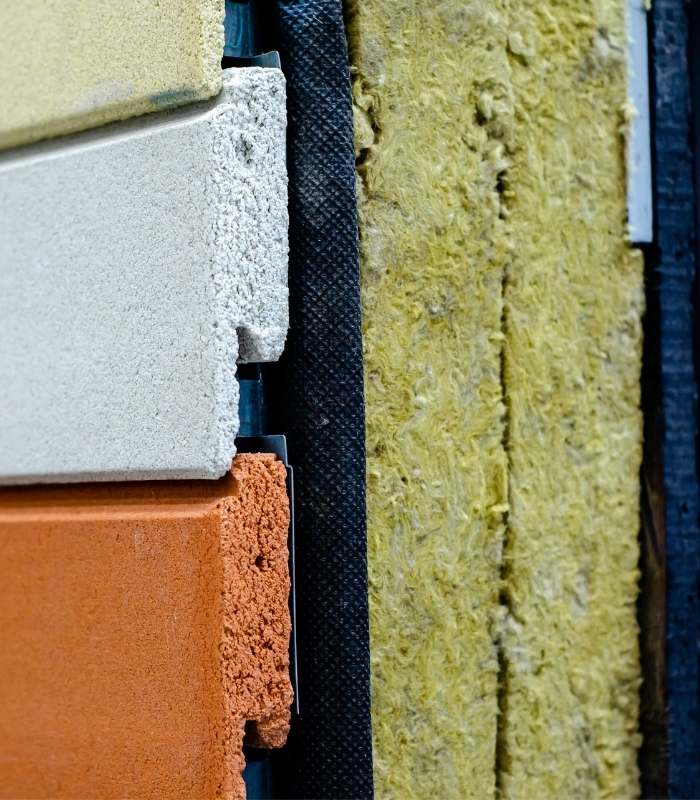
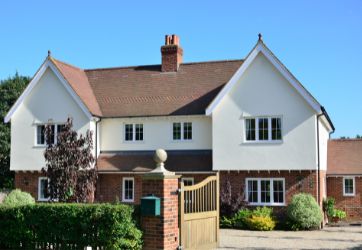
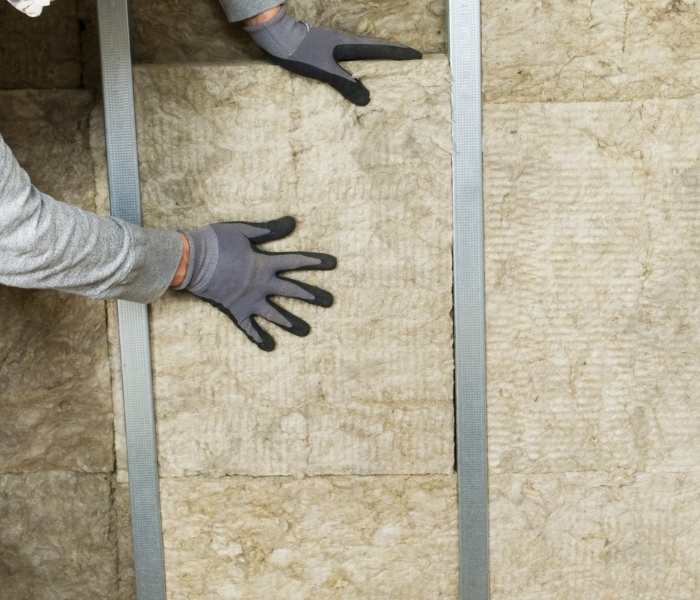
There is no single thickness of external wall insulation which is suitable for every home or wall type. Too many factors influence the outcome, including:
A standard rule of thumb in the industry is for cavity wall insulation to be at least 10cm thick.
As of the summer of 2022, Checkatrade states the average cost of cavity wall insulation for a detached home is £17,500. For a semi-detached property, the average cost is around £9,000 and for a mid-terrace home, the average cost is £7,000.
The average cost is a great starting point when planning this work, but this might not be an accurate reflection on the cost of externally insulating your home. If you would like a tailored quote per square metre for cavity wall work, please contact WeDoRender, and we will arrange an appointment and render test for your home.
We offer brick wall and internal walls solutions, as well as a full range of external solid wall insulation services.
If you are considering the cost of external wall insulation, it is helpful to consider the average cost saving of adding insulation to your external walls.
The Energy Saving Trust has examined the average energy and cost savings for a range of property types.
For a mid terrace house, property owners can save an average of £4,000 to £6,000 on energy bills, with the average cost saving of £160 per year.
With a semi detached house, homeowners save an average of £8,000 to £10,000 on energy bills, relating to an average cost saving of £225 each year.
Detached property owners enjoy an average of £12,000 to £14,000 savings on their energy bills, relating to an average cost saving of £425 each year.
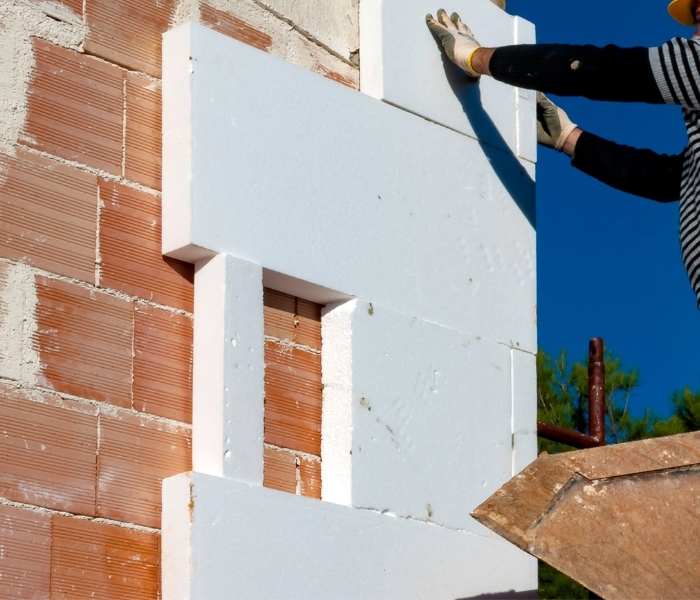

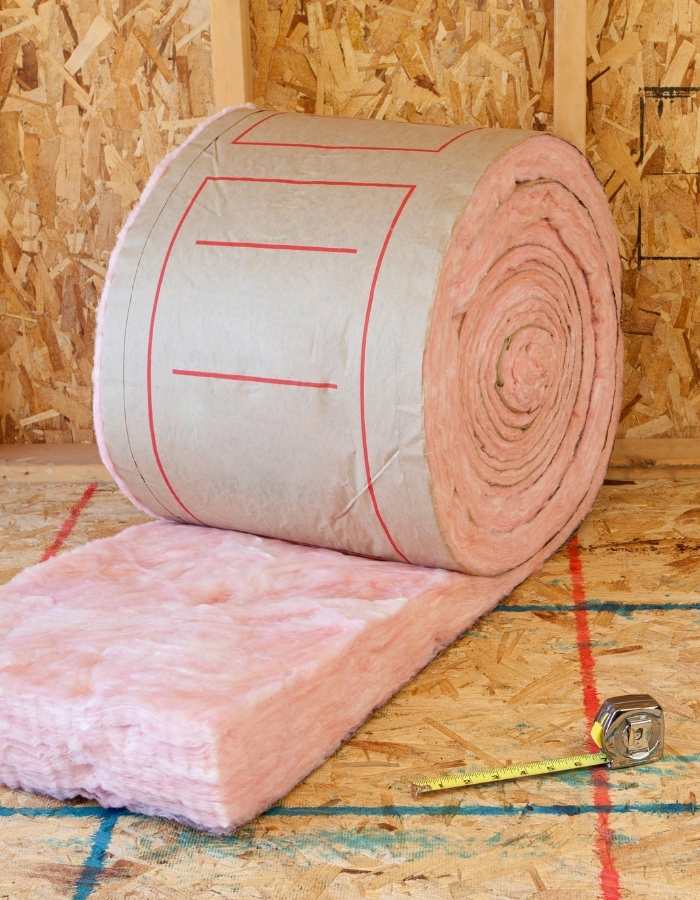
In some cases, external wall insulation is expensive, regardless of your personal finances. It is best to consider this home improvement as an investment which saves money and adds value to your property. Over an extended period, many property owners believe external wall insulation is a great investment.
Please be aware some homeowners can obtain help through local council grants or a green homes grant. WeDoRender has liaised with many local council authorities on the behalf of homeowners, and if you need advice about applying for a green homes grant, please get in touch with an external insulation specialist.
You can, and there is a wide range of DIY insulation products, building materials and equipment to help you. However, unless you are skilled and experienced in this line of work, it is often a false economy to save money in this manner.
WeDoRender aims to provide you with comfort and confidence you’d associate with adding insulation to your home. Depending on your needs, we can find the most affordable insulation material, and we’ll advise whether this is likely to positively impact your home.
In some instances, the benefits of the material don’t even reach the cost of material and installation, negatively impacting your home. So, sometimes cheap insulation material is best avoided.
Also, when you do work yourself, without the right skills or expertise, you run the risk of problems arising. Problems might arise which have to be resolved by a professional later, or you could damage the property.
In these cases, the overall cost of solid wall insulation and associated tasks is far greater than the cost of hiring a professional.
We look to provide the best service at all times, delivering a value for money solution that helps you in the short and long term.
In general, there is no need for external wall insulation to require UK planning permission. In some cases, perhaps where a semi detached property is listed, or there is a local conservation order, there might be an issue in changing the outside of a property.
If you are in any doubt, it is worth checking with your local authority on the topic of external wall insulation. However, WeDoRender are highly experienced in building regulations, and if you need any guidance, please get in touch, and we will be happy to assist you.
While external wall insulation by itself isn’t a cause of dampness in and around the home, there is an issue if the insulation isn’t installed to a high standard. If moisture is able to enter solid walls, dampness can occur.
It is best to call on an expert to install insulation, and WeDoRender is on hand to assist you as best we can, advising on all matters of water vapour and rising damp. Damp problems make homes and people miserable, but with our help, you can avoid damp problems at your home.
A common issue for many homeowners is condensation, and if you want to rid this blight from your home, improving the external wall insulation is a good idea.
External wall insulation reduces condensation by implementing a barrier between the dry and cold air outside the property, and the moist and warm inside the home. By keeping these different types of air apart around your outside walls, you reduce the likelihood of condensation at your home.
A strong reason to install external wall insulation to your home is to add value. Prospective property buyers take energy-efficiency standards, and the average heating bill, into consideration when making an offer on a home.
A well-insulated home with low energy bills is fare more appealing to likely buyers, and this means buyers are willing to pay more for this style of home. This outcome pushes up the value of a property in comparison with similar homes without this feature, so it is worth considering for homeowners who are keen to add value to their home.
Yes, but please be aware that the sort of insulation you’d use with brick or cement block wall will not suffice.
With a solid stone wall, you should consider a foam board solution, or even a spray-on option. It is also possible to combine these insulation types to make the best solution for a solid stone wall property. Whatever issue or question you have concerning walls, even if its can you insulate walls with hanging baskets on them, please let us know.
Yes, but more realistically, no. There are many walls which aren’t solid walls, constructed from materials that enable light to pass through. You also have walls which contain doors or windows, and these are technically not solid walls, even if most of the walls are made from solid brick.
Choosing the right form of solid wall insulation for your home is essential, and WeDoRender are solid wall insulation specialists. No matter the size, shape or form of your solid walls, if you want the best external insulation, we can help.
If you have any questions regarding the best insulation solution for your home and solid walls, be it external or internal insulation, please get in touch.
WeDoRender knows the benefits of external wall insulation, and we are pleased to offer an extensive range of services and solutions. Whether you want to discuss your options, or you want to arrange a visit or start-date, we are more than happy to help.
The short and long term benefits of external wall insulation make a big difference, and insulation works to help you enjoy your whole house.
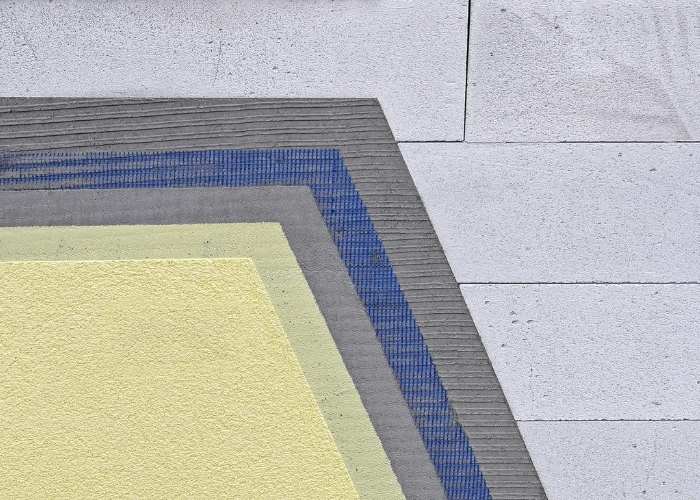

Does external wall insulation increase the value of your home? Yes, it frequently does. EWI will enhance the visual appeal of your house, increasing its resale value. Better insulation will also increase your home's Energy Performance Certificate (EPC) rating, which is a selling point.
External insulation warms the wall, which causes the dew point to move outwards, towards the colder external air, minimising the likelihood of condensation occurring on the internal surface, which can lead to concerns such as moisture.
According to a government survey conducted in 2018, based on a small number of buildings with retrofitted external wall insulation, property values increased by an average of 3% *. So, the money you've spent may affect the market value of your home, but this isn't certain.
Building rules would typically apply where 25% or more of an external wall is being renovated, and the thermal insulation of the wall would have to fulfil the levels required by building regulations Approved Documents.